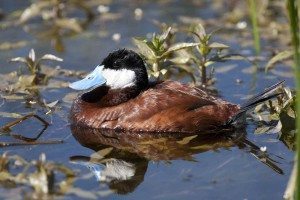The color blue
By Phila Rogers
Whether it’s the Bay sparkling in the morning sun, a mountain lake in a granite bowl, or the clear sky itself, the color blue is both refreshing and soothing.
To see an azure-blue Mountain Bluebird open its wings and spread its tail as it lifts lightly from the ground is a sight not easily forgotten. Of course, there is no such thing as a blue bird – only certain birds whose feathers reflect the light in such a way that the bird appears to be blue.
Among the blue birds in our region, only several species – the Mountain Bluebird, the Blue Grosbeak, and the Indigo Bunting — are mostly blue. Steller’s Jays, a resident bird in much of the west, are blue-black.
Mountain Bluebirds are most apt to show up in the winter in the grasslands in the eastern part of Alameda County, while the Blue Grosbeaks are neotropical migrants who breed along brushy areas and streamsides away from the coast. The Indigo Bunting is rare in our parts, seen only infrequently in the summer months. Where lacking a member of its species, Indigo Buntings sometimes interbreed with a more common Lazuli Bunting.
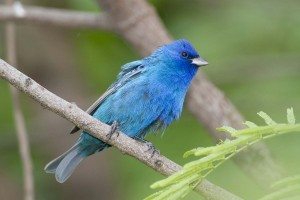

And then there are those blue birds who combine their blue with areas of chestnut and white. Think of the Western Bluebird, and the Lazuli Bunting, whose exquisite turquoise back and head are reminiscent of the semi-precious gemstone. And the shaggy-crested Belted Kingfisher whose blue verges on gray in some light, and the common, aggressive Scrub Jay, its blue tempered by gray, brown and white depending on the subspecies.
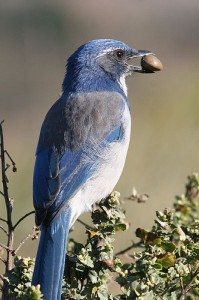
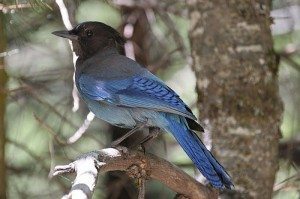
Two swallows come to mind – the Barn Swallow with its blue-black back and head and the Tree Swallow with its blue-green back and head.
Of course, not all blue birds behave alike. The jays are aggressive by nature and are raucously vocal, while the bluebirds are quiet except for almost inaudible call notes. As they hover above a field watching for insects, they are delicacy itself.
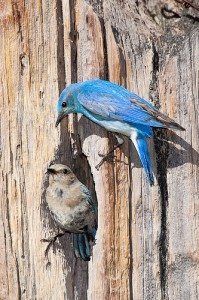
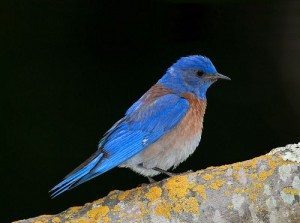
Some species save their blue to be used in small areas as a kind of exclamation point. Consider the bright blue touches on several of our water birds – the blue-green wing patch on the Blue-winged Teal, and the breeding Brandt’s Cormorant’s startling electric-blue throat patch. But nothing quite equals the blue bill of the Ruddy Duck, displayed during its breeding season, which fairly shouts “BLUE!”
